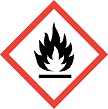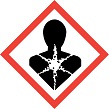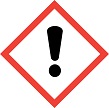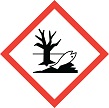Latest GHS Classification Results by the Japanese Government (edited by NITE)
GENERAL INFORMATION
REFERENCE INFORMATION
PHYSICAL HAZARDS
HEALTH HAZARDS
ENVIRONMENTAL HAZARDS
NOTE:
GENERAL INFORMATION
| Item | Information |
|---|---|
| CAS RN | 110-49-6 |
| Chemical Name | Ethylene glycol monomethyl ether acetate |
| Substance ID | m-nite-110-49-6_v1 |
| Download of Excel format | Excel file |
REFERENCE INFORMATION
| Item | Information |
|---|---|
| Guidance used for the classification (External link) | To Guidance List |
| UN GHS document (External link) | To UN GHS document |
| FAQ(GHS classification results by the Japanese Government) | To FAQ |
| List of Information Sources (Excel file) | List of Information Sources |
| List of Definitions/Abbreviations | Definitions/Abbreviations |
| Sample Label by MHLW (External link) | To Workplace Safety Site (MHLW) |
| Sample SDS by MHLW (External link) | To Workplace Safety Site (MHLW) |
| OECD/eChemPortal (External link) | To OECD/eChemPortal (External link) |
| Hazard class | Classification | Pictogram Signal word |
Hazard statement (code) |
Precautionary statement (code) |
Rationale for the classification | Classification year (FY) | GHS Classification Guidance for the Japanese Government | |
|---|---|---|---|---|---|---|---|---|
| 1 | Explosives | Not classified (Not applicable) |
- |
- | - | There are no chemical groups associated with explosive properties present in the molecule. | FY2014 | GHS Classification Guidance for the Japanese Government (FY2013 revised edition (Ver. 1.0)) |
| 2 | Flammable gases | Not classified (Not applicable) |
- |
- | - | Liquid (GHS definition) | FY2014 | GHS Classification Guidance for the Japanese Government (FY2013 revised edition (Ver. 1.0)) |
| 3 | Aerosols | Not classified (Not applicable) |
- |
- | - | Not aerosol products. | FY2014 | GHS Classification Guidance for the Japanese Government (FY2013 revised edition (Ver. 1.0)) |
| 4 | Oxidizing gases | Not classified (Not applicable) |
- |
- | - | Liquid (GHS definition) | FY2014 | GHS Classification Guidance for the Japanese Government (FY2013 revised edition (Ver. 1.0)) |
| 5 | Gases under pressure | Not classified (Not applicable) |
- |
- | - | Liquid (GHS definition) | FY2014 | GHS Classification Guidance for the Japanese Government (FY2013 revised edition (Ver. 1.0)) |
| 6 | Flammable liquids | Category 3 |
 Warning |
H226 | P303+P361+P353 P370+P378 P403+P235 P210 P233 P240 P241 P242 P243 P280 P501 |
It was classified in Category 3 based on a flash point of 45 deg C (closed cup) (ICSC (2003)). Besides, it is classified in Class 3, PG III (UN1189) in UNRTDG. |
FY2014 | GHS Classification Guidance for the Japanese Government (FY2013 revised edition (Ver. 1.0)) |
| 7 | Flammable solids | Not classified (Not applicable) |
- |
- | - | Liquid (GHS definition) | FY2014 | GHS Classification Guidance for the Japanese Government (FY2013 revised edition (Ver. 1.0)) |
| 8 | Self-reactive substances and mixtures | Not classified (Not applicable) |
- |
- | - | There are no chemical groups present in the molecule associated with explosive or self-reactive properties. | FY2014 | GHS Classification Guidance for the Japanese Government (FY2013 revised edition (Ver. 1.0)) |
| 9 | Pyrophoric liquids | Not classified |
- |
- | - | It is estimated that it does not ignite at normal temperatures from an autoignition temperature of 380 deg C (ICSC (2003)). | FY2014 | GHS Classification Guidance for the Japanese Government (FY2013 revised edition (Ver. 1.0)) |
| 10 | Pyrophoric solids | Not classified (Not applicable) |
- |
- | - | Liquid (GHS definition) | FY2014 | GHS Classification Guidance for the Japanese Government (FY2013 revised edition (Ver. 1.0)) |
| 11 | Self-heating substances and mixtures | Classification not possible |
- |
- | - | Test methods applicable to liquid substances are not available. | FY2014 | GHS Classification Guidance for the Japanese Government (FY2013 revised edition (Ver. 1.0)) |
| 12 | Substances and mixtures which, in contact with water, emit flammable gases | Not classified (Not applicable) |
- |
- | - | The chemical structure of the substance does not contain metals or metalloids (B, Si, P, Ge, As, Se, Sn, Sb, Te, Bi, Po, At). | FY2014 | GHS Classification Guidance for the Japanese Government (FY2013 revised edition (Ver. 1.0)) |
| 13 | Oxidizing liquids | Not classified (Not applicable) |
- |
- | - | The substance is an organic compound containing oxygen (but not fluorine or chlorine) which is chemically bonded only to carbon or hydrogen. | FY2014 | GHS Classification Guidance for the Japanese Government (FY2013 revised edition (Ver. 1.0)) |
| 14 | Oxidizing solids | Not classified (Not applicable) |
- |
- | - | Liquid (GHS definition) | FY2014 | GHS Classification Guidance for the Japanese Government (FY2013 revised edition (Ver. 1.0)) |
| 15 | Organic peroxides | Not classified (Not applicable) |
- |
- | - | Organic compounds containing no bivalent -O-O- structure in the molecule | FY2014 | GHS Classification Guidance for the Japanese Government (FY2013 revised edition (Ver. 1.0)) |
| 16 | Corrosive to metals | Not classified |
- |
- | - | Stainless steel, steel, copper, and aluminum are durable as a container (Hommel (1991)). | FY2014 | GHS Classification Guidance for the Japanese Government (FY2013 revised edition (Ver. 1.0)) |
| 17 | Desensitized explosives | - |
- |
- | - | - | - | - |
| Hazard class | Classification | Pictogram Signal word |
Hazard statement (code) |
Precautionary statement (code) |
Rationale for the classification | Classification year (FY) | GHS Classification Guidance for the Japanese Government | |
|---|---|---|---|---|---|---|---|---|
| 1 | Acute toxicity (Oral) | Not classified |
- |
- | - | Based on LD50 values of 2,900 mg/kg (Environmental Risk Assessment for Chemical Substances Vol.2, Tentative Hazard Assessment Sheet (Ministry of the Environment, 2003)), 3,390 mg/kg (PATTY (6th, 2012)), 3,930 mg/kg (EHC 115 (1990), ACGIH (7th, 2006), DFGOT vol. 6 (1994), PATTY (6th, 2012)), 3,930-4,300 mg/kg (ECETOC TR95 (2005)), 4,300 mg/kg (Initial Risk Assessment Report (NITE, CERI, NEDO, 2008)) for rats, it was classified as "Not classified" (Category 5 in UN GHS classification). | FY2014 | GHS Classification Guidance for the Japanese Government (FY2013 revised edition (Ver. 1.0)) |
| 1 | Acute toxicity (Dermal) | Not classified |
- |
- | - | Based on reports of LD50 values of 5,214 mL/kg (5,285 mg/kg) (DFGOT vol. 6 (1994)), 5,290 mg/kg (PATTY (6th, 2012)), 5,557 mg/kg (ACGIH (7th, 2006), EHC 115 (1990), ECETOC TR95 (2005)), 5,240-5,560 mg/kg (Initial Risk Assessment Report (NITE, CERI, NEDO, 2008)) for rabbits, it was classified as "Not classified." | FY2014 | GHS Classification Guidance for the Japanese Government (FY2013 revised edition (Ver. 1.0)) |
| 1 | Acute toxicity (Inhalation: Gases) | Not classified (Not applicable) |
- |
- | - | Liquid (GHS definition) | FY2014 | GHS Classification Guidance for the Japanese Government (FY2013 revised edition (Ver. 1.0)) |
| 1 | Acute toxicity (Inhalation: Vapours) | Classification not possible |
- |
- | - | Classification not possible due to lack of data. Besides, in the previous classification, based on a report of an LC50 value (4 hours) of 700 ppm for rats (HSDB (Access on July 2014)), it was classified in Category 3. However, a cited reference of HSDB (Access on July 2014) was PATTY (5th, 2001), and this data was deleted when the PATTY (5th, 2001) was revised to the PATTY (6th, 2012), additionally, it was described that the LC50 value (4 hours) was 7,000 ppm in the original source of the PATTY (5th, 2001) (Journal of Industrial Hygiene and Toxicology. 30, 63, 1948). Therefore, without adopting HSDB (Access on July 2014) report, it was classified as "Classification not possible." Besides, because the LC50 value was lower than 90% of the saturated vapour concentration (2,665 ppm), the reference value in units of ppm was applied as a vapour without a mist. | FY2014 | GHS Classification Guidance for the Japanese Government (FY2013 revised edition (Ver. 1.0)) |
| 1 | Acute toxicity (Inhalation: Dusts and mists) | Not classified |
- |
- | - | Based on a report of an LCLo value (4 hours) of 7,000 ppm (=33.8 mg/L) for rats (Environmental Risk Assessment for Chemical Substances Vol.2, Tentative Hazard Assessment Sheet (Ministry of the Environment, 2003)), it was classified as "Not classified." Besides, because the LCLo value was higher than the saturated vapour concentration (2,665 ppm=12.9 mg/L), the reference value of the mist was applied. | FY2014 | GHS Classification Guidance for the Japanese Government (FY2013 revised edition (Ver. 1.0)) |
| 2 | Skin corrosion/irritation | Not classified |
- |
- | - | Since there is a report that, when 0.5 mL was applied to the shaved ventral side by 4-hour occlusive application in a skin irritation test with rabbits (EEC method), it was not irritating (Initial Risk Assessment Report (NITE, CERI, NEDO, 2008)), it was classified as "Not classified." Besides, there was a result of mild irritation in a 24-hour occlusive application test (Draize test method) (Initial Risk Assessment Report (NITE, CERI, NEDO, 2008)). | FY2014 | GHS Classification Guidance for the Japanese Government (FY2013 revised edition (Ver. 1.0)) |
| 3 | Serious eye damage/eye irritation | Category 2B |
Warning |
H320 | P305+P351+P338 P337+P313 P264 |
Since there is a report on mild irritation in an eye irritation test with rabbits (ACGIH (7th, 2006), DEFGOT vol.6 (1996)), it was classified in Category 2B. | FY2014 | GHS Classification Guidance for the Japanese Government (FY2013 revised edition (Ver. 1.0)) |
| 4 | Respiratory sensitization | Classification not possible |
- |
- | - | Classification not possible due to lack of data. | FY2014 | GHS Classification Guidance for the Japanese Government (FY2013 revised edition (Ver. 1.0)) |
| 4 | Skin sensitization | Classification not possible |
- |
- | - | Classification not possible due to lack of data. Besides, a case of a 58-year-old woman was reported who developed dermatitis on her nose in contact with her glasses, and this was considered to be due to the 2-methoxyethyl acetate used to glue the pads to the body of the glasses (Initial Risk Assessment Report (NITE, CERI, NEDO, 2008), PATTY (6th, 2012)). However, because it was a report on only one case, it was judged to be insufficient data for classification. | FY2014 | GHS Classification Guidance for the Japanese Government (FY2013 revised edition (Ver. 1.0)) |
| 5 | Germ cell mutagenicity | Classification not possible |
- |
- | - | The substance was classified as "Classification not possible" because it was not possible to classify a substance as "Not classified" according to the revised GHS classification guidance for the Japanese government. As for in vivo, there was a negative result in a micronucleus test with bone marrow cells by intraperitoneal administration to Chinese hamsters (Initial Risk Assessment Report (NITE, CERI, NEDO, 2008), ECETOC TR95 (2005), OEL Documentations (Japan Society For Occupational Health (JSOH), 2009)). As for in vitro, although there were negative or positive results in bacterial reverse mutation tests, chromosome aberration tests and sister chromatid exchange tests with cultured mammalian cells, positive results were reported at high doses (Initial Risk Assessment Report (NITE, CERI, NEDO, 2008), ECETOC TR95 (2005), OEL Documentations (Japan Society For Occupational Health (JSOH), 2009), NTP DB (Access on July 2014)). | FY2014 | GHS Classification Guidance for the Japanese Government (FY2013 revised edition (Ver. 1.0)) |
| 6 | Carcinogenicity | Classification not possible |
- |
- | - | Classification not possible due to lack of data. | FY2014 | GHS Classification Guidance for the Japanese Government (FY2013 revised edition (Ver. 1.0)) |
| 7 | Reproductive toxicity | Category 1A |
 Danger |
H360 | P308+P313 P201 P202 P280 P405 P501 |
In a teratogenicity test with mice by the oral route (gavage), complete embryo resorptions were observed at a dose (1,225 mg/kg bw/day) where no maternal effects developed (Initial Risk Assessment Report (NITE, CERI, NEDO, 2008), ECETOC TR95 (2005)). There was a little information on the reproductive effects of ethylene glycol monomethyl ether acetate (EGMEA). However, EGMEA is rapidly metabolized to ethylene glycol monomethyl ether (EGME) in the body (OEL Documentations (Japan Society For Occupational Health (JSOH), 2009)). In addition, it was listed in the reproductive toxicants Group 1 (Substances known to cause reproductive toxicity in humans) in the Recommendation of Occupational Exposure Limits (Japan Society For Occupational Health (JSOH), 2009) (provisional proposal in 2013). Therefore, it was classified in Category 1A. | FY2014 | GHS Classification Guidance for the Japanese Government (FY2013 revised edition (Ver. 1.0)) |
| 8 | Specific target organ toxicity - Single exposure | Category 1 (central nervous system, blood system, kidney), Category 3 (narcotic effects) |
  Danger Warning |
H370 H336 |
P308+P311 P260 P264 P270 P321 P405 P501 P304+P340 P403+P233 P261 P271 P312 |
There are no data on the acute effects of this substance by a single exposure to humans. It was reported that in an 8-hour inhalation exposure test with cats and rabbits at a concentration of 450 ppm, they died due to the kidney injury (Initial Risk Assessment Report (NITE, CERI, NEDO, 2008)). There were no reports by other routes. Besides, although it is described in DFGOT vol. 6 (1994) that the causes of death due to acute toxicity of this substance in rats, guinea pigs and rabbits were metabolic acidosis, nephrotoxicity and effects on the central nervous system, there were no detailed descriptions. In the ECETOC TR95 (2005), there was a description that "this substance is rapidly cleaved to ethylene glycol monomethyl ether (EGME; CAS RN: 109-86-4). Since EGME has distinct central nervous system toxicities, effects on the central nervous system may also be assumed for this substance." Effects on the central nervous system, hemal system, respiratory tract irritation and narcotic effects were confirmed in ethylene glycol monomethyl ether. Therefore, although there was no direct information of this substance, this substance may have effects by EGME, and then it seemed reasonable to regard EGME's Category 1 (central nervous system, hemal system, kidney) and Category 3 (respiratory tract irritation, narcotic effects) as the category for this substance. However, since it is assumed that this substance changes to EGME after absorption, Category 3 (respiratory tract irritation) was not adopted. From the above, it was classified in Category 1 (central nervous system, hemal system, kidney), Category 3 (narcotic effects). |
FY2014 | GHS Classification Guidance for the Japanese Government (FY2013 revised edition (Ver. 1.0)) |
| 9 | Specific target organ toxicity - Repeated exposure | Category 1 (blood system, testis) |
 Danger |
H372 | P260 P264 P270 P314 P501 |
This substance is the acetate of ethylene glycol monomethyl ether (EGME; CAS RN 109-86-4) and is hydrolyzed in vivo to produce EGME quickly, and then oxidized via alcohol dehydrogenase and aldehyde dehydrogenase to transfer to 2-methoxyacetic acid (MAA). It is considered that MAA or MAA conjugated with glycine are active metabolites (ECETOC TR 95 (2005), Initial Risk Assessment Report (NITE, CERI, NEDO, 2008), CICAD 96 (2010)). Since it is considered that also this substance shows behavior and vital reaction like EGME after absorption into the body, it is considered that repeated dose toxicity of this substance is not different from that of EGME. However, the findings of repeated exposure to this substance were extremely limited, and there were no reliable findings on humans. In experimental animals, there is a report that testis atrophy and leukopenia were observed at a high dose (500 mg/kg/day: 192 mg/kg/day (converted guidance value)) corresponding to "Not classified" in a 5-week oral dose test with male mice (DFGOT vol. 6 (1994), ECETOC TR 95 (2005), Initial Risk Assessment Report (NITE, CERI, NEDO, 2008), CICAD 96 (2010)). Since the elimination half-life of active metabolites is quite longer in humans than in experimental animals (pregnant rats and pregnant monkeys) and residual time in the body is long (CICAD 67 (2010)), it is considered that toxicities may appear stronger than in experimental animals. From the above, although there was no direct evidence other than data on mice, it was concerned that testicular toxicities and effects on the hemal system might develop like EGME, and then it was classified in Category 1 (hemal system, testis). Besides, because in the previous classification, it was classified by using only data on experimental animals from the information source not listed in the GHS classification guidance for the Japanese government, and this time, it was judged by using the knowledge of metabolism and pharmacokinetics. The classification result was changed. |
FY2014 | GHS Classification Guidance for the Japanese Government (FY2013 revised edition (Ver. 1.0)) |
| 10 | Aspiration hazard | Classification not possible |
- |
- | - | Classification not possible due to lack of data. | FY2014 | GHS Classification Guidance for the Japanese Government (FY2013 revised edition (Ver. 1.0)) |
| Hazard class | Classification | Pictogram Signal word |
Hazard statement (code) |
Precautionary statement (code) |
Rationale for the classification | Classification year (FY) | GHS Classification Guidance for the Japanese Government | |
|---|---|---|---|---|---|---|---|---|
| 11 | Hazardous to the aquatic environment Short term (Acute) | Category 3 |
- |
H402 | P273 P501 |
It was classified in Category 3 from 96-hour LC50 = 40 mg/L for fish (Menidia beryllina) (Initial Risk Assessment (NITE, CERI, NEDO, 2008)). | FY2011 | GHS Classification Guidance by the Japanese Government (July, 2010) |
| 11 | Hazardous to the aquatic environment Long term (Chronic) | Category 2 |
 - |
H411 | P273 P391 P501 |
If chronic toxicity data are used, then it is classified in Category 2 due to being rapidly degradable (a 2-week degradation rate by BOD: 95% (Biodegradation and Bioconcentration Results of Existing Chemical Substances under the Chemical Substances Control Law, 2002)), and 7-day EC10 = 0.06 mg/L for crustacea (Ceriodaphnia dubia) (Initial Risk Assessment (NITE, CERI, NEDO, 2008)). If acute toxicity data are used for a trophic level for which chronic toxicity data are not obtained, then it is classified as "Not classified" due to being rapidly degradable (a 2-week degradation rate by BOD: 95% (Biodegradation and Bioconcentration Results of Existing Chemical Substances under the Chemical Substances Control Law, 2002)), and a low bioaccumulation estimate (log Kow = 0.1 (PHYSPROP Database, 2009)), despite 96-hour LC50 = 40 mg/L for fish (Menidia beryllina) (Initial Risk Assessment (NITE, CERI, NEDO, 2008)). By drawing a comparison between the above results, it was classified in Category 2. |
FY2011 | GHS Classification Guidance by the Japanese Government (July, 2010) |
| 12 | Hazardous to the ozone layer | Classification not possible |
- |
- | - | This substance is not listed in the Annexes to the Montreal Protocol. | FY2011 | GHS Classification Guidance by the Japanese Government (July, 2010) |
NOTE:
|